The flag of Lesotho is a vibrant symbol that encapsulates the nation’s spirit and values. It represents Lesotho’s unique character and the aspirations of its people. Through its design, the flag weaves a narrative that reflects the country’s natural beauty and cultural richness, uniting its citizens in a common bond.
Flag of Lesotho
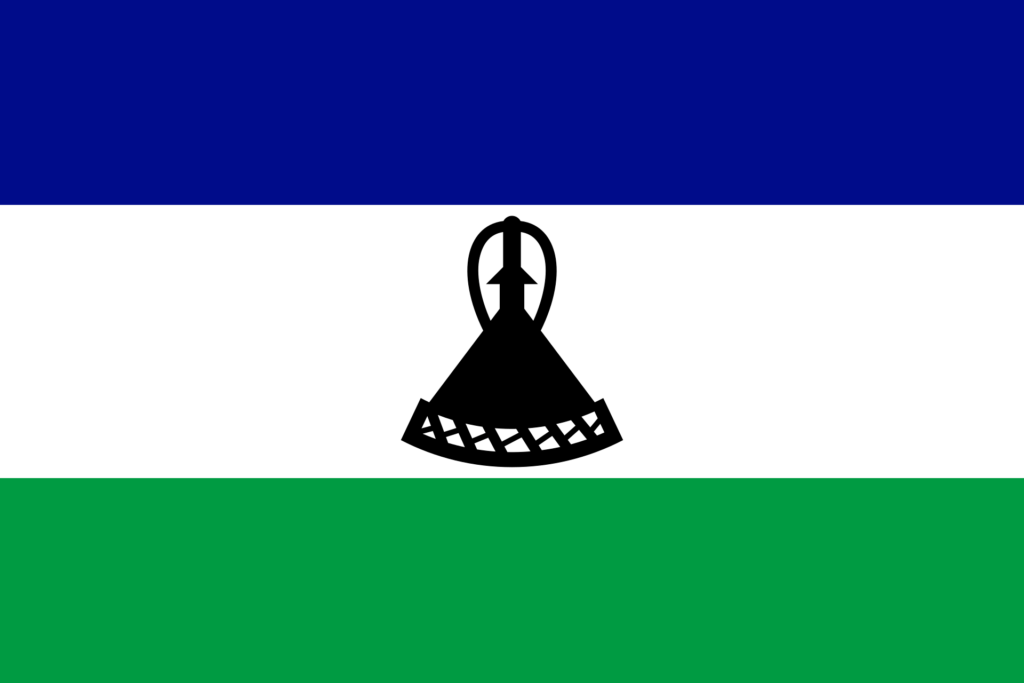
The flag of Lesotho is characterized by a design deeply symbolic of the nation’s ethos and heritage, composed of three distinct horizontal stripes. The flag displays a black Basotho hat at its center, known as a “Mokorotlo.” This iconic symbol is more than a traditional headgear; it represents the indigenous Basotho people and their enduring cultural legacy.
The overall layout of the flag, devoid of complex imagery, speaks to the country’s straightforward approach to unity and national identity. It’s a design that captures the essence of Lesotho, focusing on what truly matters to its people and their way of life.
Flag of Lesotho: Color Palette
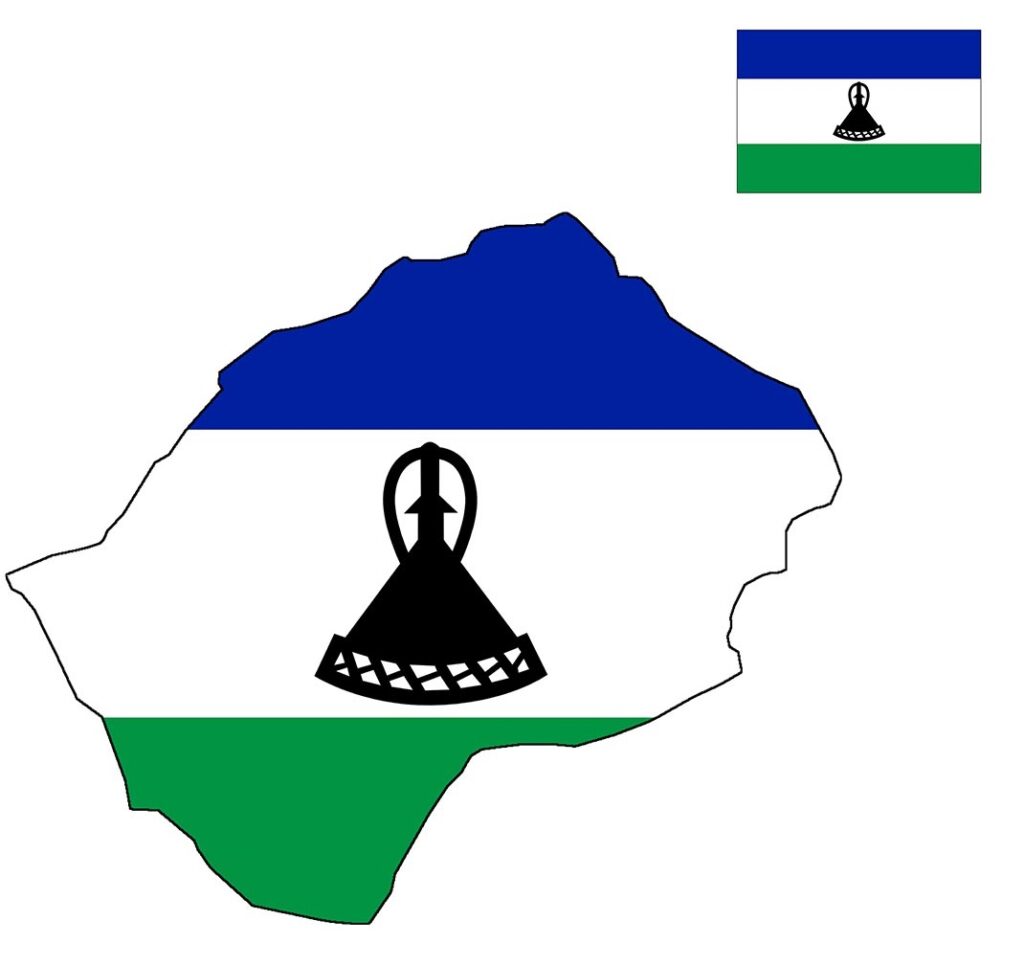
Lesotho Flag Emoji: 🇱🇸
Lesotho’s flag’s color palette is visually striking and rich in symbolic meaning. Each color has been chosen purposefully, reflecting the nation’s identity and values. As we explore the significance of each hue, it becomes clear that these colors are not just a part of the flag’s design but are integral to telling the story of Lesotho and its people.
Meaning of Each Color
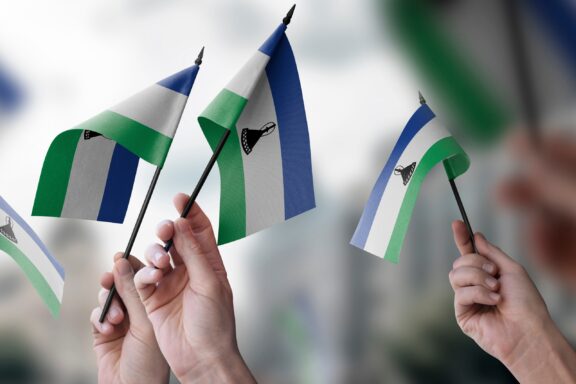
Blue
The blue stripe at the top of Lesotho’s flag symbolizes the sky and rain. Rain holds a special place in Lesotho’s culture and economy, vital for agriculture, a key sector of the nation’s economy. The dependence on rain for agricultural prosperity is deeply ingrained in the country’s history and cultural practices.
White
The white stripe in the middle represents peace. This color choice reflects Lesotho’s enduring commitment to peace and harmony within its borders and international relations. The choice of white symbolizes the nation’s aspirations for tranquility and unity among its people.
Green
The green stripe at the bottom of the flag signifies prosperity, particularly through agriculture and livestock, which are central to Lesotho’s economy and way of life. Green is often associated with growth, fertility, and the richness of the land, all of which are crucial to the nation’s cultural and economic health.
Mokorotlo (Basotho Hat)
The black Basotho hat, or Mokorotlo, centered on the white stripe, is an iconic cultural symbol. It represents the indigenous people of Lesotho and their rich cultural heritage. This hat is deeply rooted in the nation’s identity, symbolizing the unity and cultural pride of the Basotho people.
Lesotho’s Coat of Arms
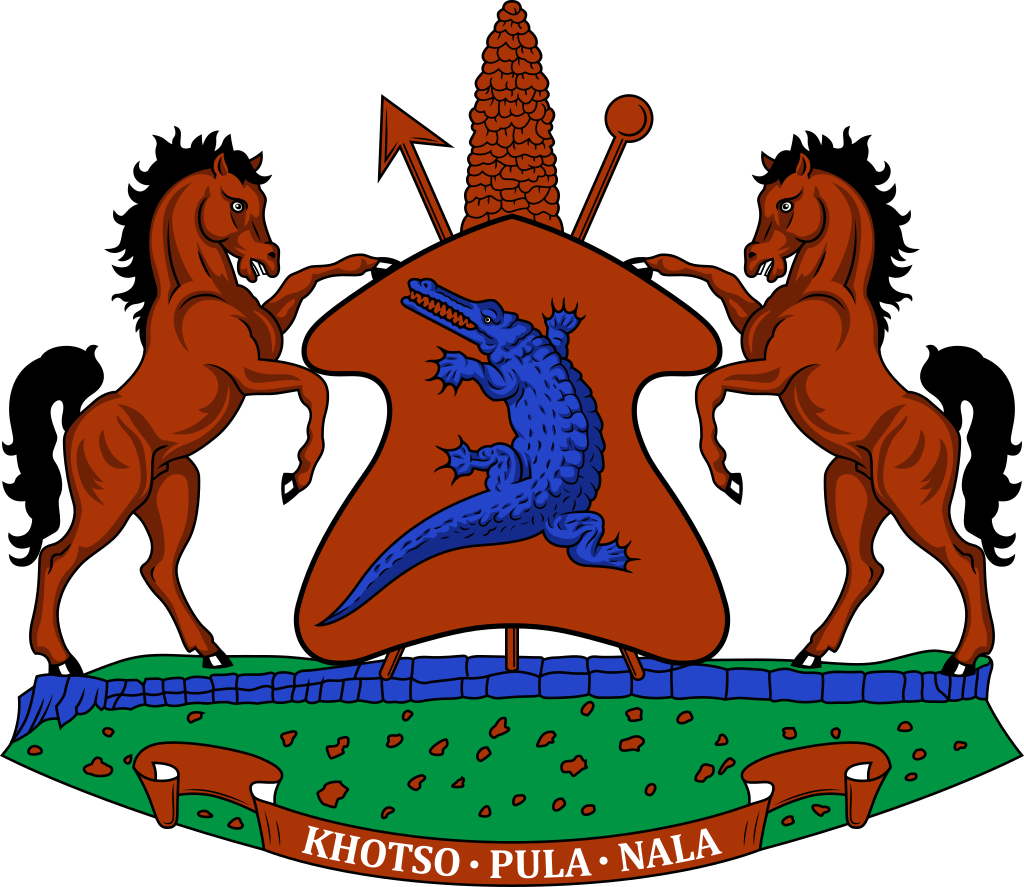
Lesotho’s Coat of Arms, distinct from its flag, carries its own set of symbols, meanings and values:
- Shield: At the center is a shield depicting a crocodile on a blue background. The crocodile is a significant national symbol, representing the nation’s and its people’s enduring strength and resilience.
- Supporters: On either side of the shield are two Basotho horses. The horse is an essential animal in Lesotho, symbolizing the speed, strength, and grace characteristic of the Basotho people.
- Motto: Below the shield is the national motto: “Khotso, Pula, Nala,” which translates to “Peace, Rain, Prosperity.” This motto encapsulates Lesotho’s core values and aspirations, highlighting the importance of peace, the blessings of rain for agriculture, and the pursuit of prosperity.
- Basotho Hat: The Mokorotlo is also featured in the Coat of Arms at the top, reinforcing its cultural significance as a national symbol.
- Other Elements: The Coat of Arms may include additional elements like spears or a knobkierie, traditional weapons representing the nation’s history and defending its freedom.
The Coat of Arms symbolizes the nation of Lesotho overall, reflecting its culture and prosperous past. Each element has been carefully chosen to represent the nation’s character and heritage.
Historical Evolution and the Meaning Behind Changes
The flag of Lesotho has seen notable changes in its design since the country’s independence, mirroring shifts in its national narrative and political context.
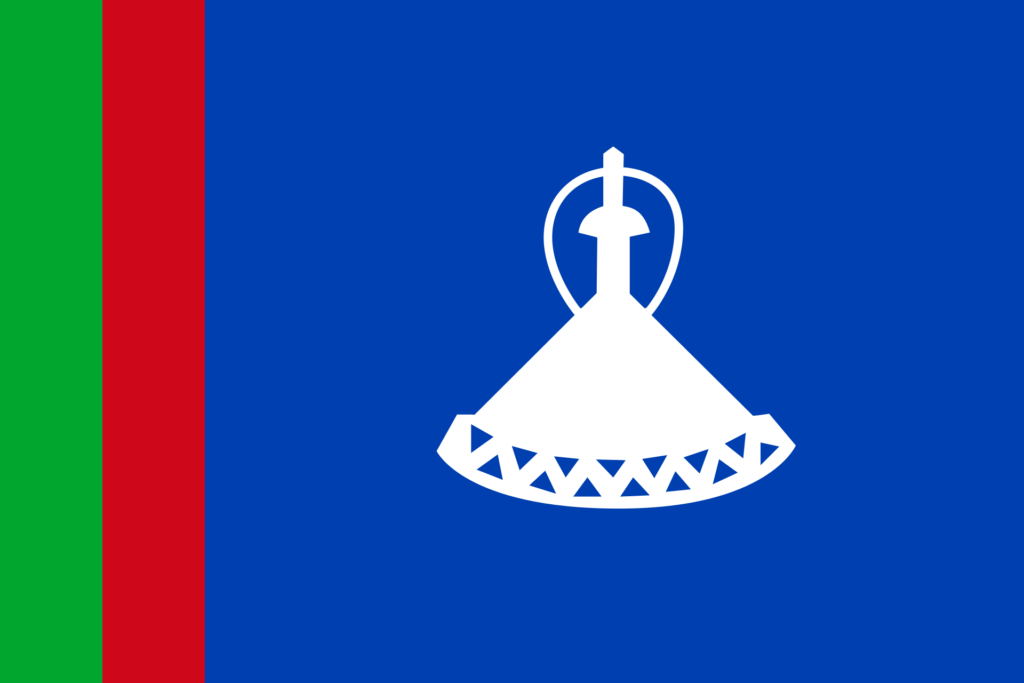
Following independence in 1966, Lesotho adopted a flag that combined several elements, including the traditional Basotho hat, a symbol of peace and unity, set against a backdrop representing key national values.
In 1987, a new flag design was introduced, coinciding with significant political changes within the country. This design departed from the original by introducing different symbols, indicating a national focus and identity shift.
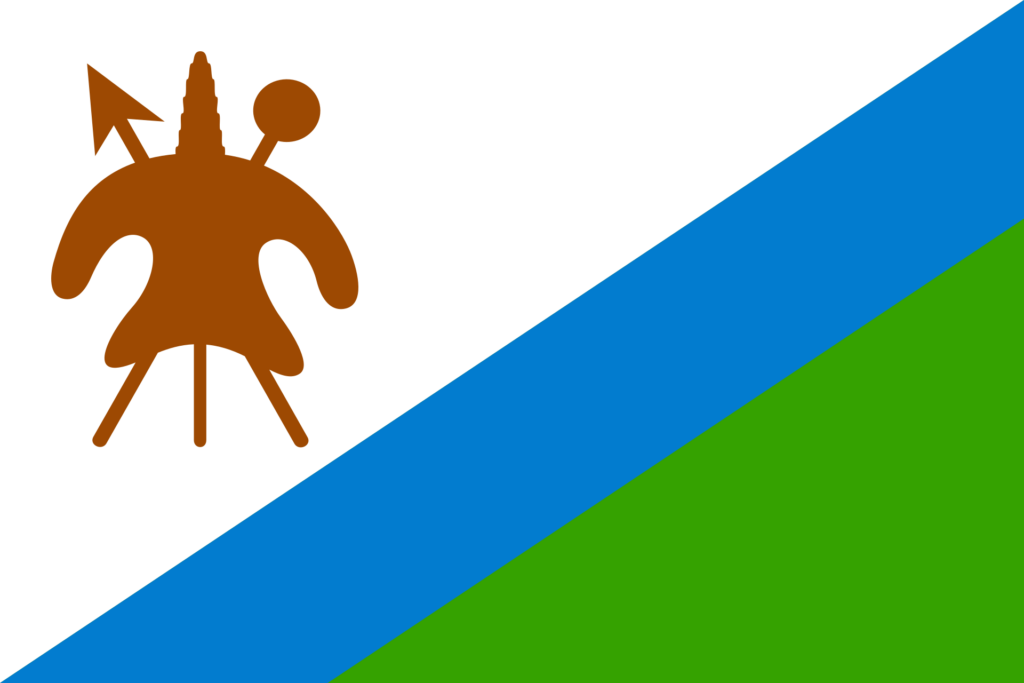
The most recent change came in 2006, on the 40th anniversary of Lesotho’s independence. This redesign returned to certain elements from the original flag, specifically the Basotho hat, now centered against a simplified backdrop.
This change was a move to symbolize a new era of peace and stability, aligning the flag more closely with Lesotho’s culture and heritage.
Throughout these transformations, Lesotho’s flag has continuously evolved to reflect the changing dynamics of the nation, while maintaining core symbols that resonate deeply with its people and history.
Overall Symbolic Meaning of the Flag
The flag of Lesotho vividly represents the nation’s essence, seamlessly integrating symbols of its character and values, and reflects the unity and resilience of the Basotho people, anchored in a deep respect for their traditions and legacy.
The Basotho hat included within the flag symbolizes a connection to the land and a commitment to preserving the nation’s ethos, allowing for this flag to stand not only as a national emblem but also as a representation of Lesotho’s collectiveness, embodying the hopes and aspirations of its people.
Similar Flags to the Flag of Lesotho
Let’s look closer at the top flags resembling Lesotho’s flag, uncovering the reasons behind these visual parallels.
Sierra Leone
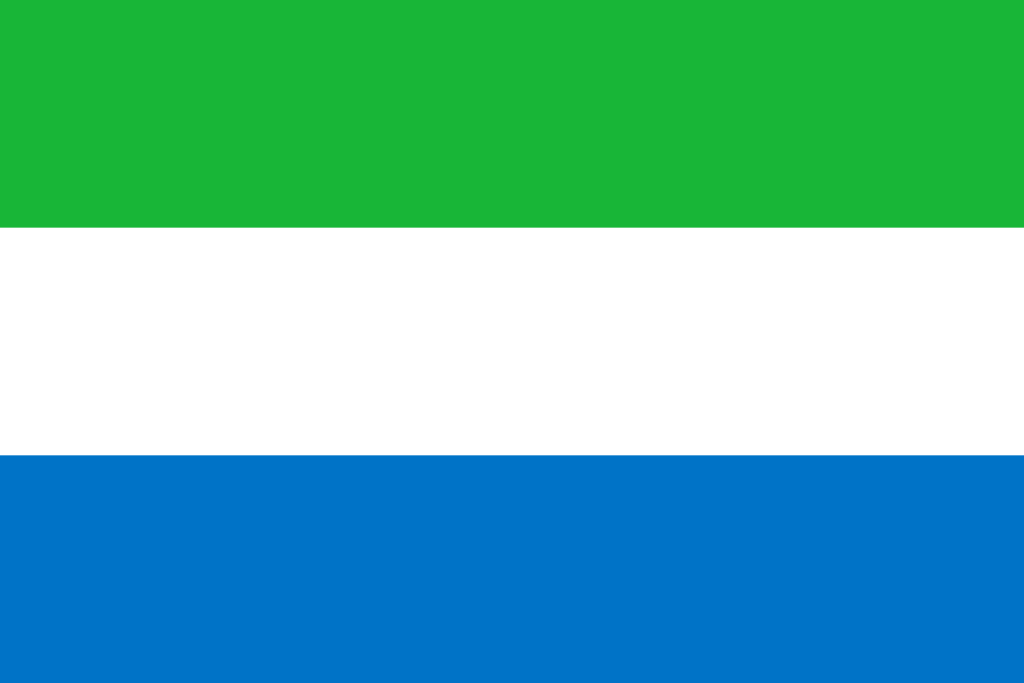
Sierra Leone’s flag features a tricolor of horizontal stripes, similar to Lesotho’s design. Though the colors are different, the use of horizontal stripes in both flags suggests a common approach to representing key national concepts in a clear, straightforward manner.
This design choice is prevalent in many African nations, symbolizing unity and national identity.
Botswana
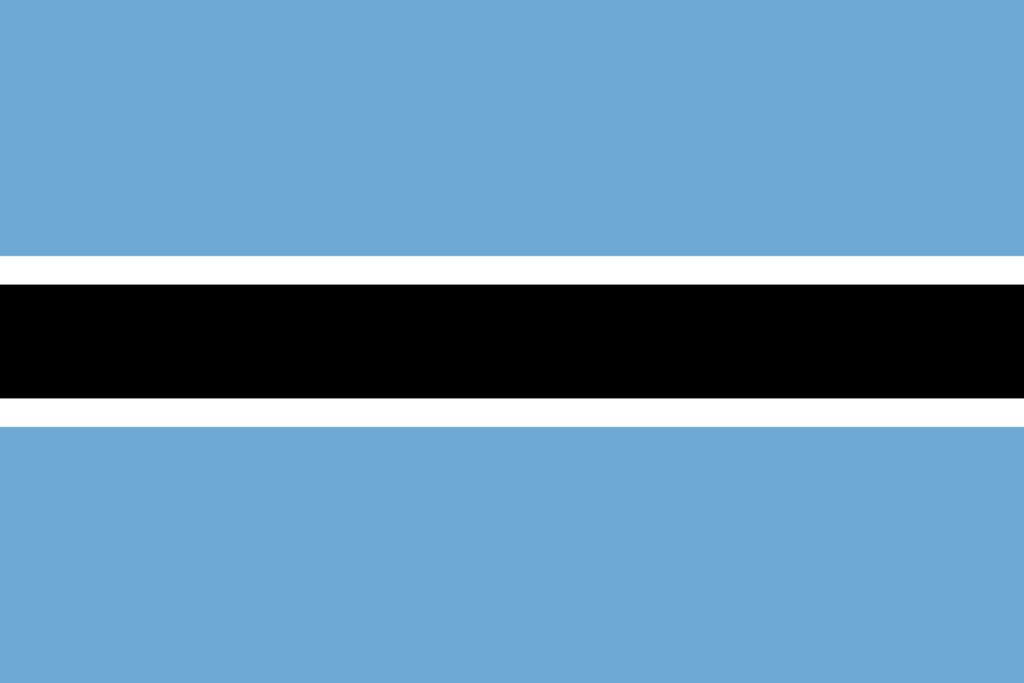
The flag of Botswana, with its light blue representing water and the sky, shares a thematic resemblance to Lesotho’s flag. This similarity highlights a common appreciation for natural resources and the environment, showcasing how geographical and climatic features influence national symbols.
Rwanda
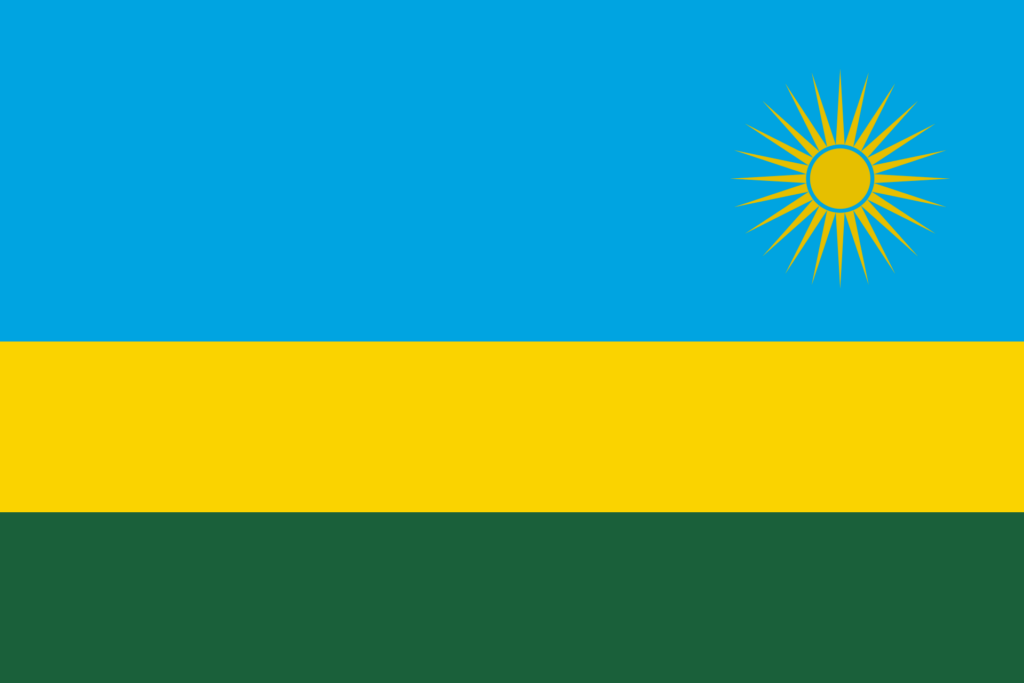
Rwanda’s flag, redesigned to signify a new national identity and a break from a tumultuous past, parallels Lesotho’s flag in its representation of national rebirth and a forward-looking perspective. This reflects a shared understanding across these nations of a flag as a symbol of transformation and hope for the future.
Final Thoughts
With its distinctive design and rich symbolism, the flag of Lesotho stands as a vibrant testament to the nation’s identity and values in the global tapestry of flags. For the people of Lesotho, it is more than a national emblem; it is a source of pride and a reflection of a unique cultural and historical journey.
Image Sources and Copyright Information
- Hands Waving Small Lesotho Flags: © BUTENKOV ALEKSEI/Shutterstock